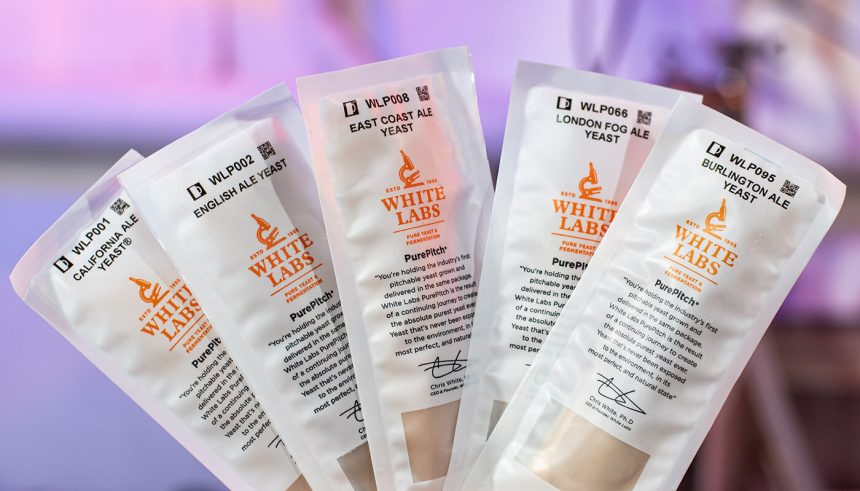After testing the first NEIPA 5 yeast, I want to try again with 5 *new* strains if you read my last post. You can see that I bottled and naturally aged all 5 beers. And before the beer can be tasted before the beer is fully oxidized, I’m NEIPA, so obviously there’s a risk.
This time I’ve tried to simplify the process and focus on the yeast itself. I don’t care about the packaging or the carbonation of the beer. My goal was to skip the bottle and sample these delicious beers straight from the brewery. It feels sluggish and incomplete. But filling 1 liter of 5 different beers is a pain. And I’m not sure I’m getting much value for the extra effort.
In retrospect, I see these strains work best when trying new beers. This is the high point for any model. Because it only degrades through a closed transfer/oxidation process.

Experience
I am currently evaluating 5 types of White Labs to qualify for NEIPA. I make 5 liters of wort, add 4 ounces of Citra and Motueka Swirl Additive 50-50, and divide the batch into 5 separate 1-gallon mason jars. Well, I took turns this time and actually learned a thing or two. If you look at the beer photo above and wonder why he did it? Please read as this beer is not an oxidation beer.
I wanted to speed up the process as much as possible and thought it would be an interesting experiment with a light IPA. Following the tips/recipes I read online, I used light gold DME and wheat DME. Bavarian I add half at the beginning of the cycle and the rest in the last 15 minutes.
I’ve read passages where NEIPA can easily go dark due to the increased sensitivity of the passages. This beer was darker than I expected and may spoil future comments. if I try again I will save all the extracts for the last 15 minutes of mixing to keep the mixture as light as possible. I also tried oatmeal soup. Though it’s hard to tell if it adds value.
Yeast
I use the following types for this test:
- California Ale WLP001: My favorite yeast would be a classic Chico variety. I was curious how it compares to others. I have never used this type of beer in a beer like NEIPA.
- English Ale WLP002: White Labs is described as a classic BSE by one of England’s leading independent breweries. From what I’ve heard, it works well at NEIPA.
- East Coast Ale WLP008: Described as having the same clean properties as WLP001, but with some added esters. Appreciation from other designers
- London Fog WLP066: From everything I’ve read so far. It is similar to White Labs 1318, which I know and have used many times.
- Burlington Ale WLP095: Also known as Top Alchemist, this is similar to the GY054 Vermont Ale that I have used and loved in the past.
So I think a lot of these guys aren’t technically new. Because I have already tried them through other yeast shops. Maybe he didn’t use White Labs’ offer for these guys. Also, I’ve tried WLP007 and WLP644 in NEIPA, both of which are top of the list and the type I highly recommend. So this is where I tried just about every White Labs goon for style.
The jump is a snowflake
I brewed with 1oz of each Cryo Eukenot on day 7. This turned out to be a big mistake… Luckily I tried to write my own tasting notes on these beers before starting dry hopping. aromas in the final beer. I’m sure they should have made the beer lighter. but not all I need and not what I would recommend. Unless you make Habanero beer.
Given this, packing is equivalent to 10 ounces of whole Ukenotes dry hops in a 5-gallon container, assuming the more potent properties of Cryo double the load.
However, there are some interesting hints in both Haze’s interpretation and the final character as a whole. Because some breeds stand out when it comes to pulling.
The last attraction
I am always interested in comparing the final attractiveness of the plants to each other. I know this isn’t a total surprise. But it’s still an interesting science. The default gravity is 1.070 Details of each type are given below. We ended up throwing away about half the bag in each sample.
- Strain#Final
- GravityABV
- California Ale0107.8%
- English Ale0157.2%
- East Coast Ale0127.6%
- London Fog0147.3%
- Burlington Ale0147.3%
For clarity, the picture above shows an example of hops before drying. This is where true yeast symptoms come into play. I added a note before and after the dry hop tasting. Please don’t ask me why I didn’t get WLP095 in the end.
Final Notes and Comments
Most of these ales sounded beautiful even before the addition of dry hops. And I was surprised how different WLP008 and WLP066 burst into a gold haze in just a few days from dry jump. This indicates that yeast plays an important role in haze formation.

I found this really interesting. These groups are clearly divided into two classes WLP008 / WLP066, WLP095 and WLP002 after each other throughout the taste. But both beers have different personalities at different levels of intensity, with WLP001 being the most exotic and basic of the varieties. It would be great to include them in a group of scales to compare how base types of beer are represented in the same wort.
I actually recommend one of these options. If you’re making NEIPA, it’s not like it won’t work. But on the surface it’s probably WLP001 It’s pretty simple but it would be interesting to remove the bias from the equation.
My next batch is Vermont Scrub and London Beer, these are probably the two most unique heroes, so I’m interested in mixing them in. Thanks to White Labs for providing the yeast for this experiment.










